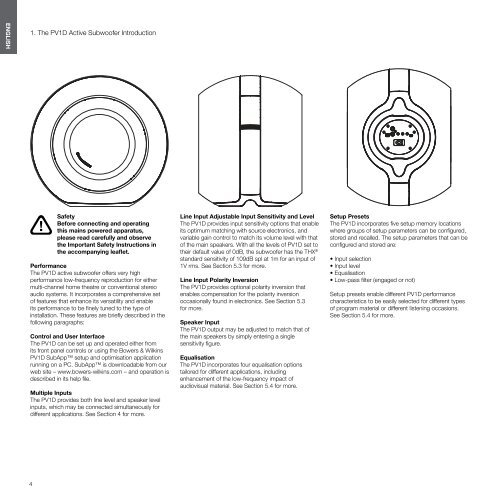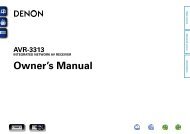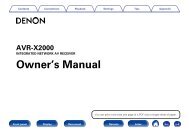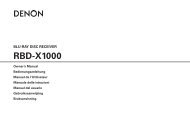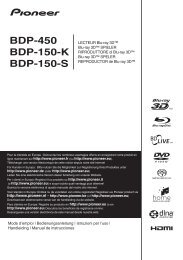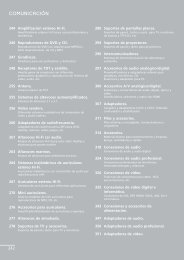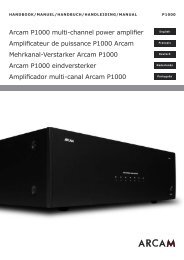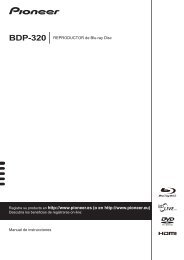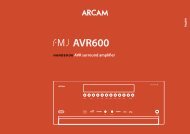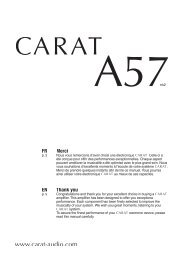You also want an ePaper? Increase the reach of your titles
YUMPU automatically turns print PDFs into web optimized ePapers that Google loves.
ENGLISH<br />
1. The PV1D Active <strong>Subwoofer</strong> Introduction<br />
Safety<br />
Before connecting and operating<br />
this mains powered apparatus,<br />
please read carefully and observe<br />
the Important Safety Instructions in<br />
the accompanying leaflet.<br />
Performance<br />
The PV1D active subwoofer offers very high<br />
performance low-frequency reproduction for either<br />
multi-channel home theatre or conventional stereo<br />
audio systems. It incorporates a comprehensive set<br />
of features that enhance its versatility and enable<br />
its performance to be finely tuned to the type of<br />
installation. These features are briefly described in the<br />
following paragraphs:<br />
Control and User Interface<br />
The PV1D can be set up and operated either from<br />
its front panel controls or using the Bowers & Wilkins<br />
PV1D SubApp setup and optimisation application<br />
running on a PC. SubApp is downloadable from our<br />
web site – www.bowers-wilkins.com – and operation is<br />
described in its help file.<br />
Multiple Inputs<br />
The PV1D provides both line level and speaker level<br />
inputs, which may be connected simultaneously for<br />
different applications. See Section 4 for more.<br />
Line Input Adjustable Input Sensitivity and Level<br />
The PV1D provides input sensitivity options that enable<br />
its optimum matching with source electronics, and<br />
variable gain control to match its volume level with that<br />
of the main speakers. With all the levels of PV1D set to<br />
their default value of 0dB, the subwoofer has the THX ®<br />
standard sensitivity of 109dB spl at 1m for an input of<br />
1V rms. See Section 5.3 for more.<br />
Line Input Polarity Inversion<br />
The PV1D provides optional polarity inversion that<br />
enables compensation for the polarity inversion<br />
occasionally found in electronics. See Section 5.3<br />
for more.<br />
Speaker Input<br />
The PV1D output may be adjusted to match that of<br />
the main speakers by simply entering a single<br />
sensitivity figure.<br />
Equalisation<br />
The PV1D incorporates four equalisation options<br />
tailored for different applications, including<br />
enhancement of the low-frequency impact of<br />
audiovisual material. See Section 5.4 for more.<br />
Setup Presets<br />
The PV1D incorporates five setup memory locations<br />
where groups of setup parameters can be configured,<br />
stored and recalled. The setup parameters that can be<br />
configured and stored are:<br />
• Input selection<br />
• Input level<br />
• Equalisation<br />
• Low-pass filter (engaged or not)<br />
Setup presets enable different PV1D performance<br />
characteristics to be easily selected for different types<br />
of program material or different listening occasions.<br />
See Section 5.4 for more.<br />
4


